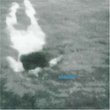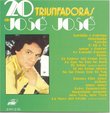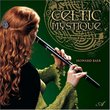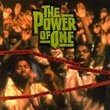| All Artists: Beethoven, Norrington, Lcp Title: Beethoven: Symphonies Nos. 2 & 8, Coriolan & Egmont Overtures Members Wishing: 1 Total Copies: 0 Label: Angel Records Release Date: 7/8/1997 Genre: Classical Styles: Historical Periods, Classical (c.1770-1830), Symphonies Number of Discs: 1 SwapaCD Credits: 1 UPC: 724356137523 |
Search - Beethoven, Norrington, Lcp :: Beethoven: Symphonies Nos. 2 & 8, Coriolan & Egmont Overtures
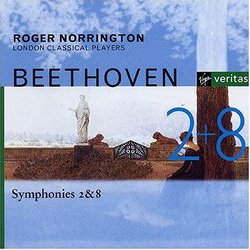 | Beethoven, Norrington, Lcp Beethoven: Symphonies Nos. 2 & 8, Coriolan & Egmont Overtures Genre: Classical
In the early Beethoven symphonies, Roger Norrington produces some entertaining noises, particularly from the trumpets and drums. But after repeated listenings, these crude, badly balanced, scrappily played performances beg... more » |
Larger Image |
CD DetailsSynopsis
Amazon.com In the early Beethoven symphonies, Roger Norrington produces some entertaining noises, particularly from the trumpets and drums. But after repeated listenings, these crude, badly balanced, scrappily played performances begin to lose a lot of their appeal. Norrington seems almost completely immune to anything other than the music's shock value, and he's relentlessly overmiked by the recording engineers. A loser. --David Hurwitz Similar CDsSimilarly Requested CDs
|
CD ReviewsIt's not Norrington who is the loser ... Leslie Richford | Selsingen, Lower Saxony | 09/23/2004 (5 out of 5 stars) "It seems that there are two possible approaches to interpreting Beethoven: either you come to his works as one who is 'in the know', i. e. as someone coming back to Beethoven in full consciousness of the development of music up to Mahler and beyond and using the musical means available today; or you come to Beethoven as a 'researcher', i. e. approaching him from the past (the 18th century) and using the musical means available to Beethoven and his contemporaries, and expecting to discover through a meticulous study of the music in its written form exactly how and why Beethoven was such an innovator, in a word: a genius. The first approach (and I do not wish to question its validity) is used by many, if not most of the traditional Beethoven interpreters. The second approach in perhaps its most radical form is taken by Sir Roger Norrington in his recordings with the London Classical Players. In comparison with, for Symphony No. 2, Sir Georg Solti, the differences are quite amazing. The loud, metallic sound of modern instruments is replaced by the softer, more delicate period sound (although I should add that Norrington's brass can, on occasion, do Beethoven proud), the gut strings are quieter and, in my opinion, more pleasant to the ear, and the woodwind (in particular the flutes) actually sound wooden! Norrington also restores the historical seating order in the orchestra, having the second violins sit on the right so that their interaction with the first violins becomes patently obvious thanks to the stereo effect. And Norrington follows Beethoven's (or his pupils') metronome markings, thus achieving much faster tempi: For the Larghetto of Symphony No. 2 Norrington needs more than three minutes less than Solti! To my mind this gives Beethoven's music a freshness, a polish and a dance-like feeling that Solti, for all his eminent musicality, never quite achieves. On the Solti recording, one has the feeling that Wagner, Tchaikovsky and Mahler are always lurking somewhere in the background; Norrington, on the other hand, offers constant reminders that Beethoven 'received Mozart's spirit from the hands of Haydn', whereby it becomes plain exactly why Beethoven was the innovative genius that history has declared him to be. Personally, I find Norrington's approach both intellectually and aesthetically satisfying. His interpretation of the Eighth Symphony (the 'short' one, sometimes apostrophized as a 'hymn to humour') is equally fascinating with some wonderful effects in the Allegro scherzando and the Tempo di menuetto. The recording bears listening to any number of times, especially as it is, from an engineering standpoint, above all criticism, revealing detail after detail without ever sacrificing the whole to its parts. Only the two overtures, 'Coriolan' and 'Egmont', here added as 'encores', seem a little weak in contrast. They are, indeed, well done, but Harnoncourt's 'Coriolan' (with the Chamber Orchestra of Europe on modern instruments but in historical performance) seems to me more direct and manly, while I have never heard anything to match Christopher Hogwood's interpretation of 'Egmont' (with the Academy of Ancient Music on Decca)." Norrington plays Beethoven with his "18th century glasses." Janos Gardonyi | Toronto, Ontario Canada | 12/25/2003 (4 out of 5 stars) "This recording is part of Norrington's Beethoven Symphony cycle, recorded with his own period instruments orchestra , the London Classical Players. This is one of the best of the cycle. As we know, he goes back to basics, looks at Beethoven with "18th century glasses" to use his expression. He strictly observes Beethoven's original metronome markings, so often ignored by more romantic interpretations. He sheds all trappings handed down by Wagner and his contemporaries and we are left with pure Beethoven. None of us should be sorry.. Norrington's speeds are faster than those we are accustomed to, but he handles the orchestra with great sensitivity and bravura. He spotlights details we previously may have missed before and the outcome is exciting and "exhilarating" (Penguin Guide). The orchestra sound is distinctively fresh. The introduction to the first movement of the Second is a joy to listen to with its sforzatos and sudden pianissimos and its skillful lead into the Allegro. The whole movement moves with great swagger. The Larghetto moves comfortably, not too slow and thereby doesn't drag, since this is an unusually long movement. The finale is also as one would expect, played with great virtuosity , joy and real sense of humour specially at the final pages.(Coda) The little F-major symphony, the Eighth, is the more difficult of the two to bring off, but Sir Roger has great success with it. A work of extraordinary charm, it relies a great deal on precision, well controlled speeds, carefully controlled balances, translucent textures and lighthearted spirit. The second movement with its metronome imitation, poking fun at other composers, show Beethoven at his most jovial mood. The wonderful third movement Trio with the winds supported by the cellos and double bases is always a highlight for me. Karajan did it beautifully, but this is also quite excellent. The finale is breathtaking, as fast as it could be, but the melodies are still shaped beautifully. A great performance. Unfortunately, I cannot say this about the Egmont Overture which is taken so fast right from the beginning, that all sense of drama is lost. Note: This performance is a full 3 minutes shorter than normal (6minutes as opposed to 9). Perhaps Norrington's approach doesn't work here, sorry to say. The Coriolan overture is much better, however. All in all, a very good disc by Virgin Classics. Highly recommended. Sound is excellent." "Beethoven contemplating a bust of Haydn" Janos Gardonyi | 02/01/1999 (5 out of 5 stars) "Beethoven began from an idea of Mozartean grace and Hadynesque construction and integrity. But where for Haydn outbursts are interuptions, breaks in the fluid motion of the music - for Beethoven the ff is intergral to the music. What is a battle without cannon fire? A storm without thunder claps? A forest without the raging breeze that shivers the wood?Norrington's opponents seem not to read musical scores too well, nor have any sense of the light and classical world based on dance and a spinning vocal line. Norrington's pair of the 2nd and the 8th presents to us Beethoven both partaking of that world, and exploding it at the same time.Beethoven's 8th symphony is of a pair with the 7th. As he had with the Vth and the VIth - he had one which was all force and hammering, and the other which was flowing and graceful. What makes the VIIIth work so well in Norrington's hands - and what the Grammy recognised, is that the Haydnesque symphony moves from moment of balance to moment of balance. For Beethoven the force which shoves it along however is far more energetic.What do period instruments do with this. Instead of the great loud cadences and chords being a mere hum or thump, each voice remains its integrity. We can hear the clarinet and the oboe and the horn as separate voices. This energy, we hear the orchestra come together and then fly apart - is lost in recordings like Szell's. That this approach is strong and valid is seen by how conductors as different as Zinman, Harnancourt, Gardiner, Goodman, Glover and even to some extent Simon Rattle have taken it up. The ripples from this Beethoven have spread far. It is too bad that too many reviewers are deaf to it..."
|

 Track Listings (10) - Disc #1
Track Listings (10) - Disc #1